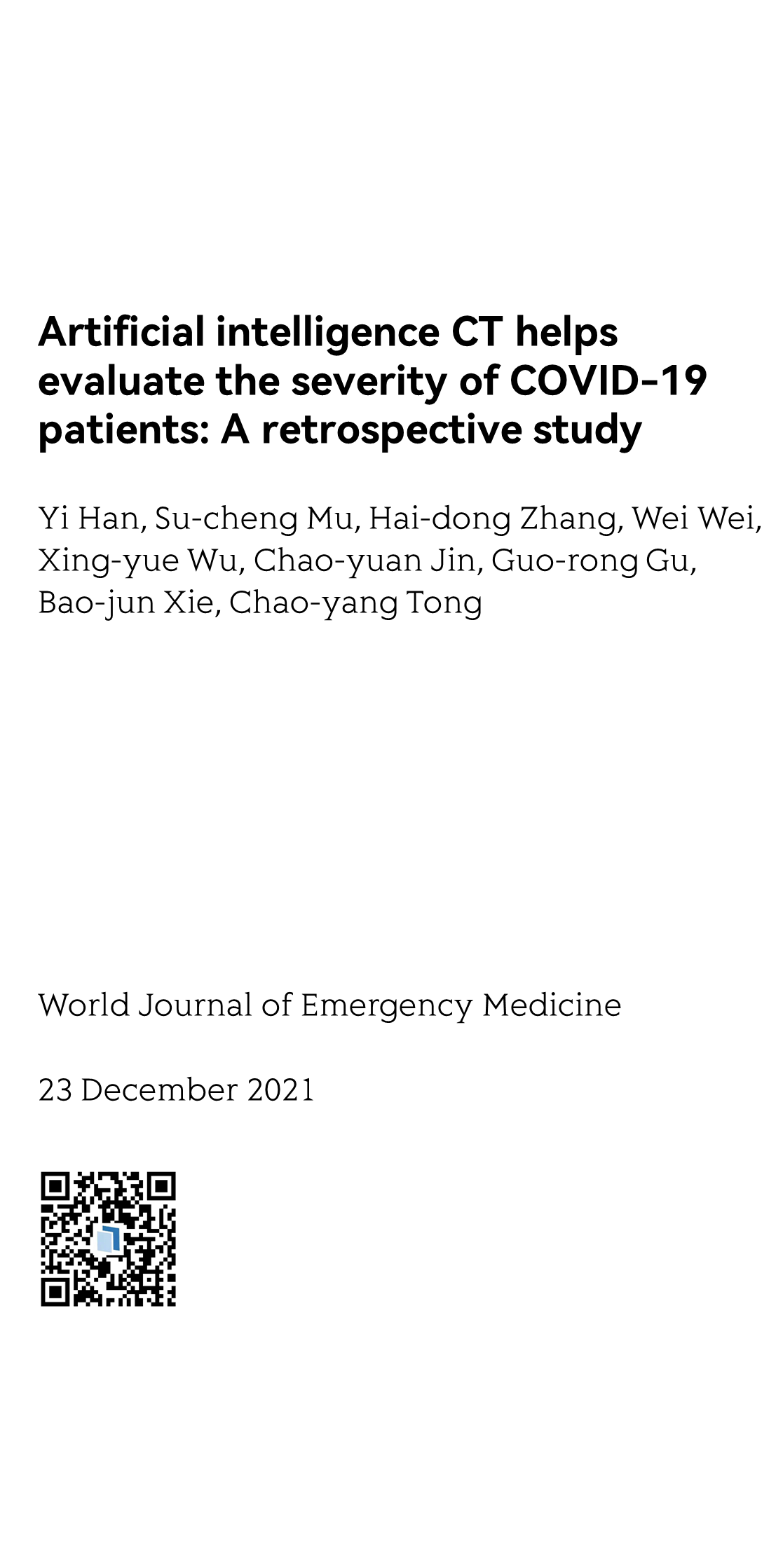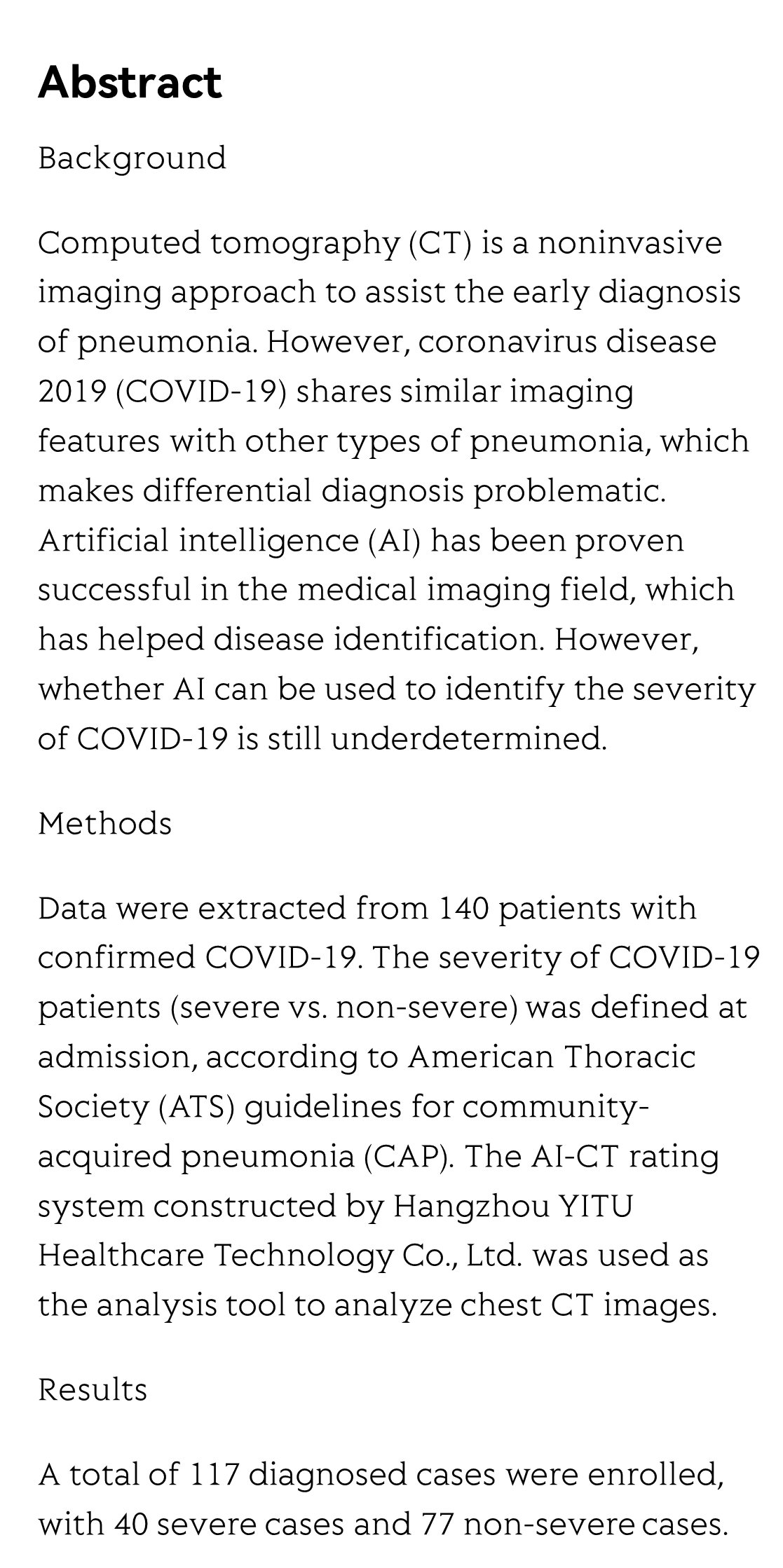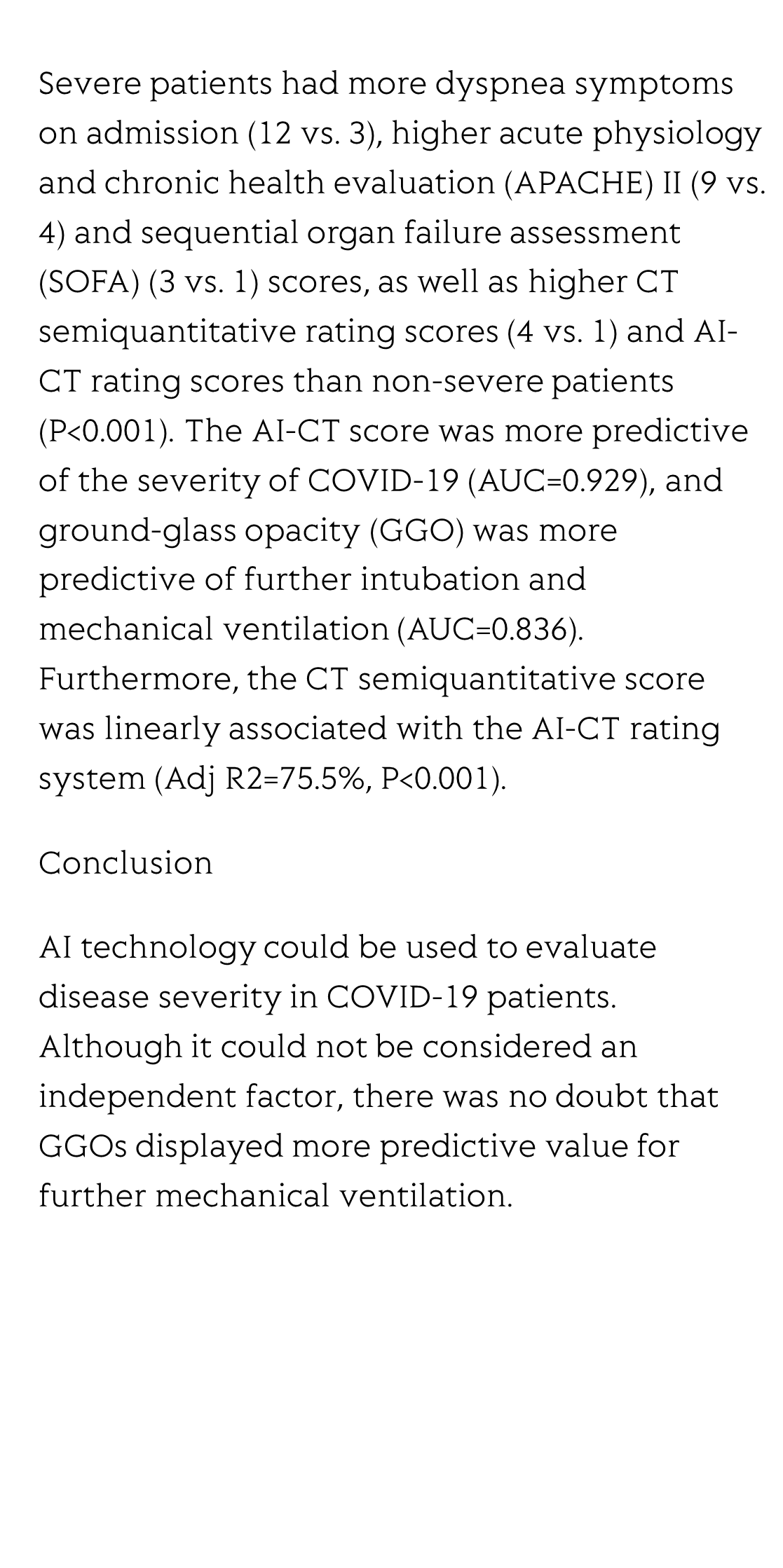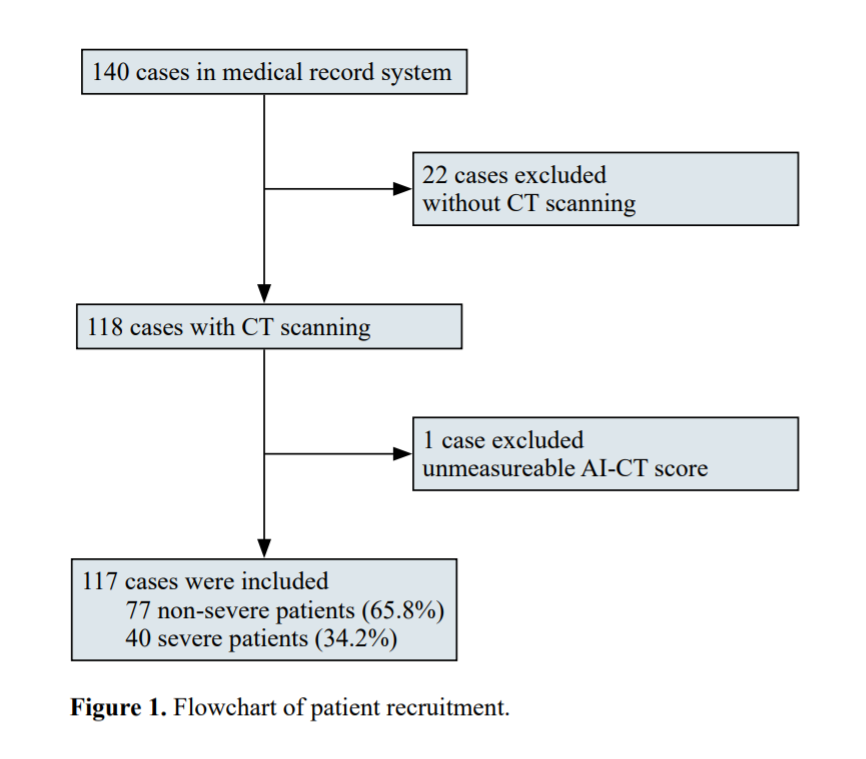(Peer-Reviewed) Artificial intelligence CT helps evaluate the severity of COVID-19 patients: A retrospective study
Yi Han ¹, Su-cheng Mu ¹, Hai-dong Zhang ², Wei Wei ¹, Xing-yue Wu ¹, Chao-yuan Jin ¹, Guo-rong Gu 顾国嵘 ¹, Bao-jun Xie 谢宝君 ², Chao-yang Tong 童朝阳 ¹
¹ Department of Emergency Medicine, Zhongshan Hospital Fudan University, Shanghai 200032, China
中国 上海 复旦大学附属中山医院急诊科
² Department of Radiology, Renmin Hospital of Wuhan University, Wuhan 430060, China
中国 武汉 武汉大学人民医院放射科
Background
Computed tomography (CT) is a noninvasive imaging approach to assist the early diagnosis of pneumonia. However, coronavirus disease 2019 (COVID-19) shares similar imaging features with other types of pneumonia, which makes differential diagnosis problematic. Artificial intelligence (AI) has been proven successful in the medical imaging field, which has helped disease identification. However, whether AI can be used to identify the severity of COVID-19 is still underdetermined.
Methods
Data were extracted from 140 patients with confirmed COVID-19. The severity of COVID-19 patients (severe vs. non-severe) was defined at admission, according to American Thoracic Society (ATS) guidelines for community-acquired pneumonia (CAP). The AI-CT rating system constructed by Hangzhou YITU Healthcare Technology Co., Ltd. was used as the analysis tool to analyze chest CT images.
Results
A total of 117 diagnosed cases were enrolled, with 40 severe cases and 77 non-severe cases. Severe patients had more dyspnea symptoms on admission (12 vs. 3), higher acute physiology and chronic health evaluation (APACHE) II (9 vs. 4) and sequential organ failure assessment (SOFA) (3 vs. 1) scores, as well as higher CT semiquantitative rating scores (4 vs. 1) and AI-CT rating scores than non-severe patients (P<0.001). The AI-CT score was more predictive of the severity of COVID-19 (AUC=0.929), and ground-glass opacity (GGO) was more predictive of further intubation and mechanical ventilation (AUC=0.836). Furthermore, the CT semiquantitative score was linearly associated with the AI-CT rating system (Adj R2=75.5%, P<0.001).
Conclusion
AI technology could be used to evaluate disease severity in COVID-19 patients. Although it could not be considered an independent factor, there was no doubt that GGOs displayed more predictive value for further mechanical ventilation.
Flicker minimization in power-saving displays enabled by measurement of difference in flexoelectric coefficients and displacement-current in positive dielectric anisotropy liquid crystals
Junho Jung, HaYoung Jung, GyuRi Choi, HanByeol Park, Sun-Mi Park, Ki-Sun Kwon, Heui-Seok Jin, Dong-Jin Lee, Hoon Jeong, JeongKi Park, Byeong Koo Kim, Seung Hee Lee, MinSu Kim
Opto-Electronic Advances
2025-09-25
Dual-frequency angular-multiplexed fringe projection profilometry with deep learning: breaking hardware limits for ultra-high-speed 3D imaging
Wenwu Chen, Yifan Liu, Shijie Feng, Wei Yin, Jiaming Qian, Yixuan Li, Hang Zhang, Maciej Trusiak, Malgorzata Kujawinska, Qian Chen, Chao Zuo
Opto-Electronic Advances
2025-09-25







